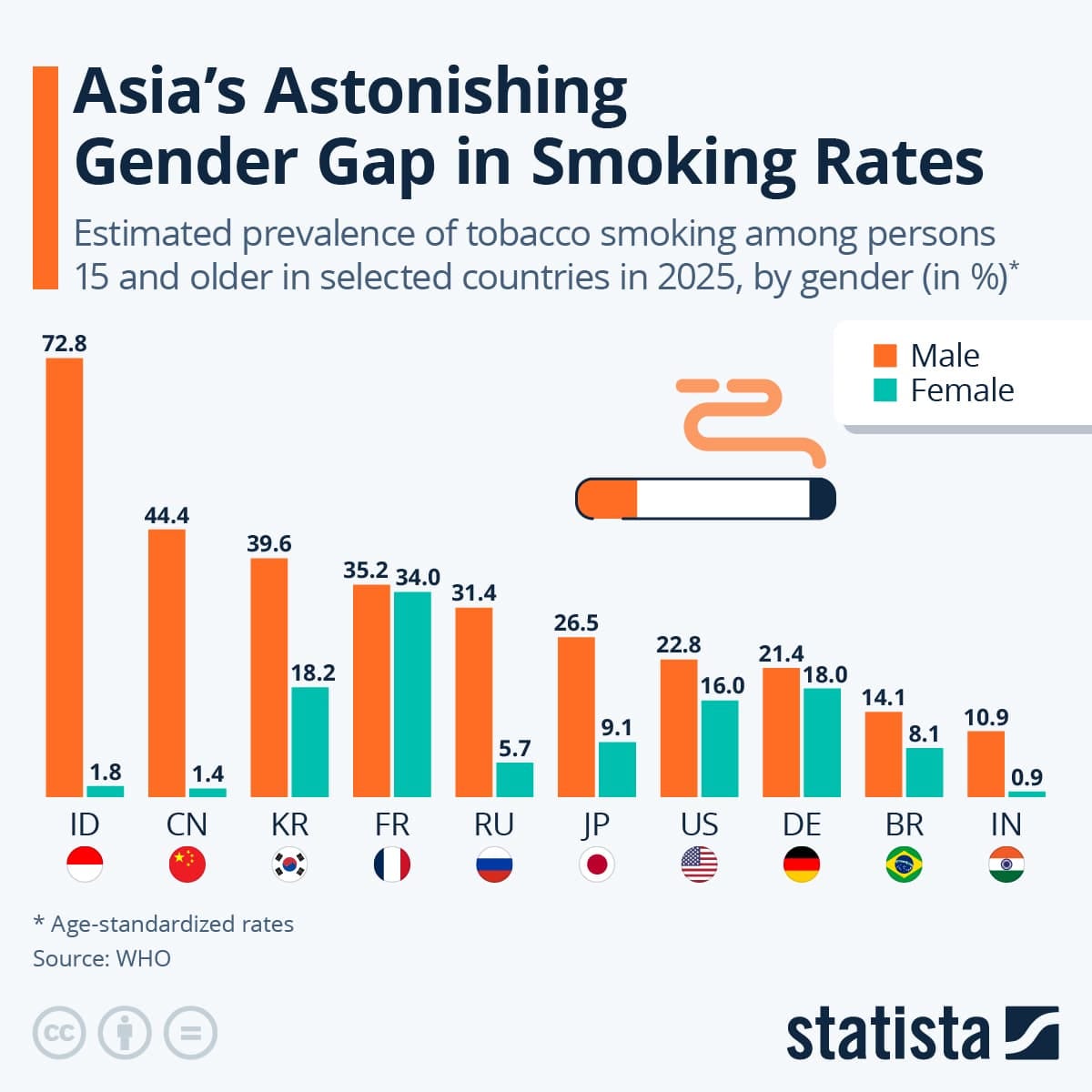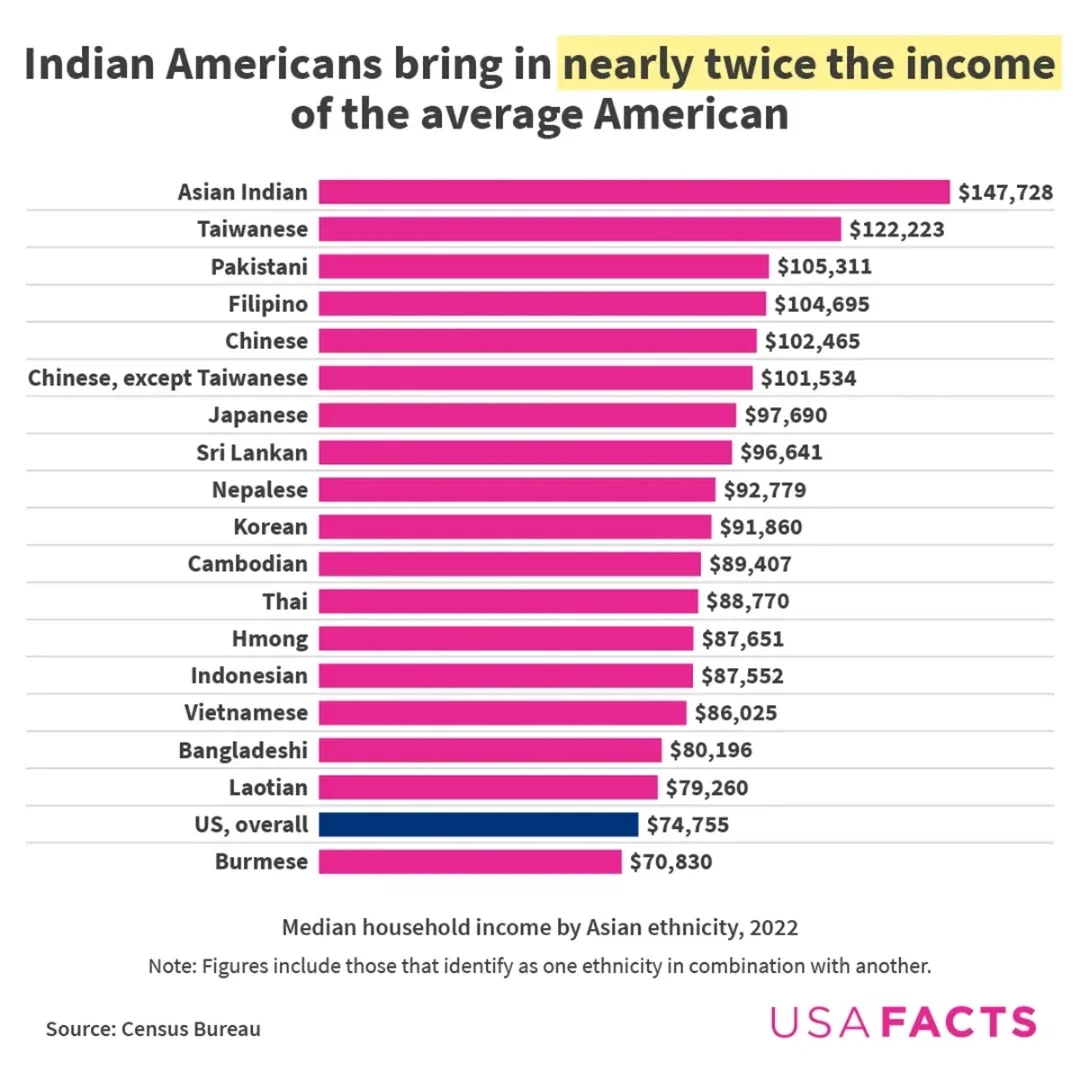Gender smoking gap, US student debt, productive immigrants
In today's issue, I explore Asia's smoking gap, defense industry scale, Asian-American income success, China-Vietnam trade routes, internet skill dependence, and student loan struggles.
1. Americans are struggling with their student loan repayments
Source: The Daily Shot
The federal student loan repayment crisis is intensifying—42.7M borrowers owe $1.6T+ collectively, avg debt $38,375/borrower, as the U.S. Department of Education begins actions to help borrowers get back into repayment. Only 38% of borrowers current on payments; nearly 25% approaching default status. Post-pandemic forbearance (which affected 65.8% of federal loans) ended Sept 2023, triggering a massive delinquency spike. Almost 10M borrowers could default within months—5M+ haven't made payments in 360+ days, 4M in late-stage delinquency (91-180 days). Public sentiment on debt forgiveness is split: 55% support $10K forgiveness, 47% support $50K forgiveness.
2. Indonesia and China have an astonishing gender gap in smoking rates
Source: Statista
WHO data reveals dramatic gender smoking disparities in Asia: Indonesia (72.8% males vs. 1.8% females) and China (44% males vs. 1.4% females). This stark contrast stems from entrenched cultural norms where smoking signifies masculinity/status for men but carries social stigma for women. This is reflected globally (although less extreme) with 32.9% male vs 6.7% female smoking prevalence. Countries with less traditional gender roles (France, Germany, US) demonstrate more balanced rates. Insidious big tobacco is now (unsurprisingly) leveraging the idea of smoking as an empowerment symbol for women, with early signs of success. 123 countries show higher tobacco use among girls than adult women. World No Tobacco Day (May 31) highlights these disparities amid continuing health impacts.
3. China is exporting to the US via Vietnam?
Source: Newsletter: The Daily Shot: Container traffic from China to the US remains low from Editor
Direct US-China trade collapsed by ~90% across scenarios as Chinese goods face prohibitive tariffs, while Vietnam-China bilateral trade reached $51.25B in Q1 2025 (+17.46% YoY). GVC-integrated sectors (products crossing multiple borders) contracted 2% more than direct bilateral trade, suggesting trade rerouting. Vietnam remains China's largest ASEAN trade partner, functioning as an intermediary for Chinese goods entering the US market as companies exploit tariff differentials. Electrical equipment/electronics (12%) and transport equipment (16%) seeing largest contractions in direct trade, indicating these sectors likely using Vietnam transit route most aggressively to circumvent tariffs.
4. The US defence industry is mind-bogglingly big
Source: Visual Capitalist
US defence budget is $849.8B for FY2025, down from $968B in 2024 (-4.8% YoY), with expected rebound to $950.8B (+3.2%) in 2026 per NDAA. Post-pandemic recovery was followed by record highs driven by Russia-Ukraine war, Middle East conflicts, and China tensions. Overall market projected to grow by $188B between 2025-2029 (4.6% CAGR) according to the US Defense Market Analysis. Key investment areas: $1.5B for Defense Production Act/Industrial Base programs, $163.4M for hypersonic R&D addressing supply chain issues, and positioning/navigation/timing subsector ($209B, 47% of $445B commercial total) expected to grow 155% by 2035. Defense contractor valuations are at record levels in 2025 amid NATO tensions. Trump's return with narrow Republican congressional majorities creates is looking less and less like it will negatively impact this.
5. Asian American (especially Indian Americans) consistently have, on average, much higher salaries
Source: USA Facts
Indian Americans bring in nearly twice the income of the average American. Immigrant-headed Indian households earn more ($156,000) vs US-born Indian households ($120,200), with Indian American households earning the highest median annual income among all Asian groups. Key factors: high educational attainment, concentration in STEM/medicine/tech sectors, entrepreneurial activity, and family structure (high marriage rates, strategic immigration patterns).
6. American adults are more and more reliant on the internet for learning basic domestic skills
Source: Chartr
Uptake of internet for basic domestic skills driven by near-universal US internet access (~93% adults have internet as of 2023, up from ~77% in 2010), smartphone ubiquity, and proliferation of online video tutorials and social platforms. There’s a socioeconomic gap: 82% of adults with both smartphone and home broadband did personal learning online last year, vs 64% with fewer tech assets. Lower-income, less-educated adults still lag (just 43% of no-college adults use the internet for personal learning vs 58% with degrees). Covid boosted digital comfort and accelerated online learning habits. Social media and YouTube have made skill-sharing frictionless; platforms now algorithmically surface instruction for home, cooking, repairs, etc. Result: American adults rely on digital self-teaching by default for household skills.







